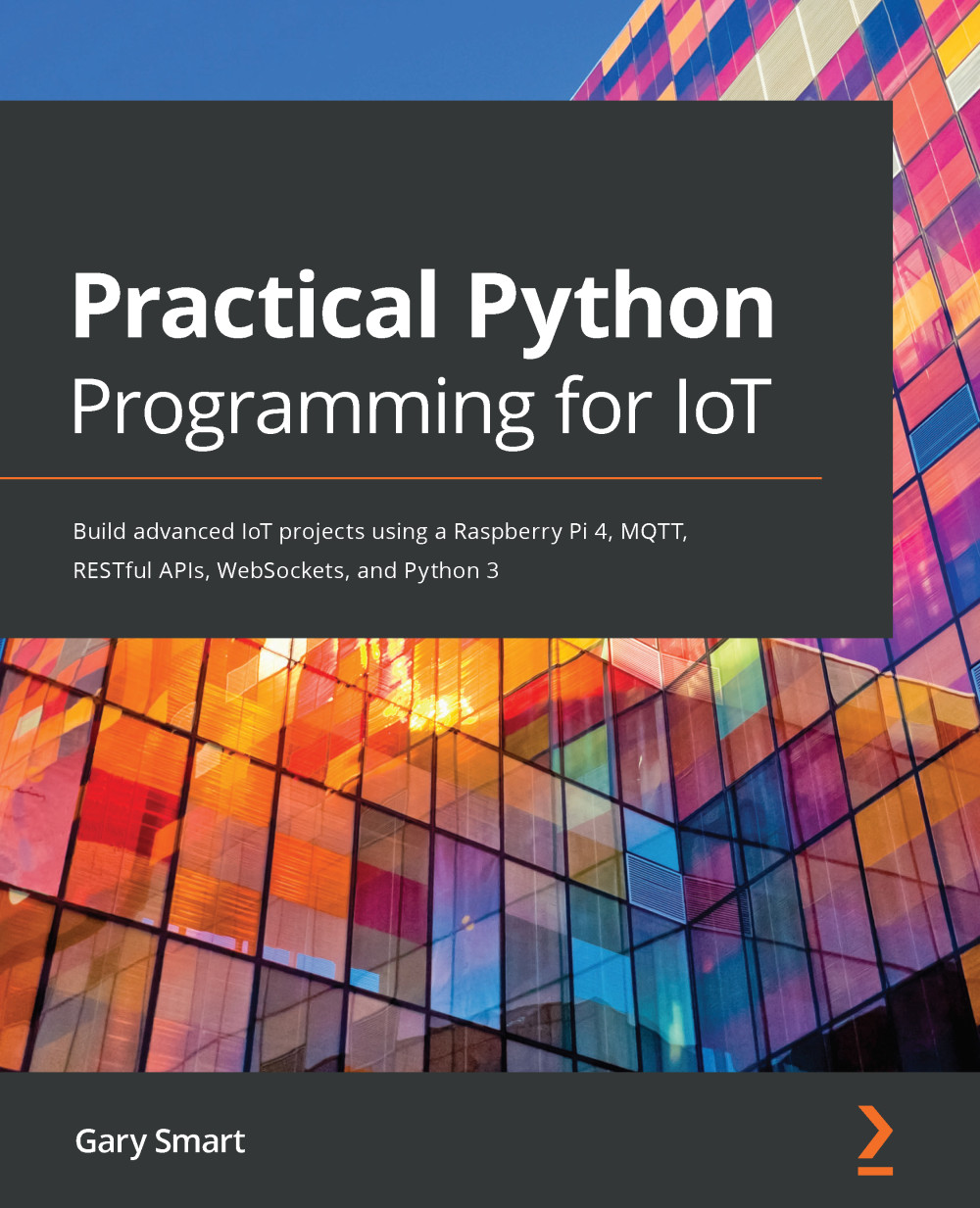Let's build our breadboard circuit for this chapter's exercise. We will build our circuits in a series of steps, starting with placing the core components as illustrated in the following diagram:

Figure 5.4 – Breadboard ADC circuit (part 1 of 3)
The overall arrangement and placement of discrete components and wires on a breadboard are not overly important. However, the connections created between the components and wires are vitally important! If you need a refresher on breadboards, how they work, and, most importantly, how the holes are electrically connected, please refer back to Chapter 2, Getting Started with Python and IoT.
Here is how to lay out the component on your breadboard. The following step numbers match the numbered black circles in Figure 5.4:
- Position the ADS1115 on your breadboard.
- Position potentiometer VR1 on your breadboard. The illustrated potentiometers are full-size potentiometers...






































































